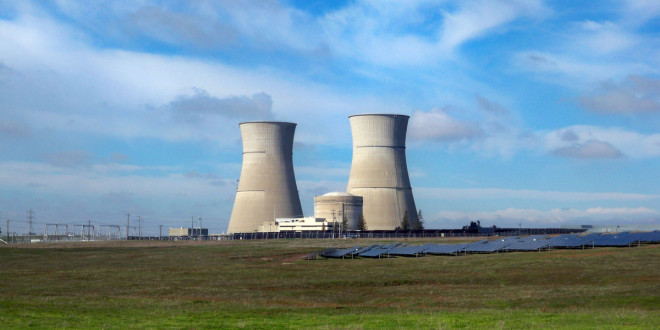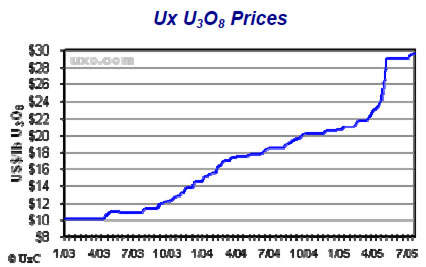When gold argues the cause, eloquence is impotent.
Publicus Syrus,
1st Century BC
This following has nothing to do with mining, but it struck a chord with me and will I suspect with many readers…
“Behind the success of plausible denial [in accounting] is an already longstanding North American disconnection from reality: the substitution of image for substance. The idea is that a presentable image makes substance immaterial. All that glitter is gold. This probably began with the glorification of literary and social celebrities during the latter nineteenth century, although it was remarked even earlier as an American tendency. False image making has become a very big business throughout North America and is a staple of the U.S. government. Legions of hired liars labor to disconnect reality from all manner of images – images of personalities, of legislation, of corporations, of places, and of activities. Spin doctors, virtuosos of deceptive image making and damage control, have become authoritative spokespersons in political campaigns and troubled institutions, able not only to disconnect reality but to construct new reality. If that sounds confusing about the reality of reality, it is; that is the purpose of spin-doctoring”.
– Jane Jacobs, Dark Age Ahead
Also as part of my summer reading this year I have churned my way through Twilight in the Desert: the Coming Saudi Oil Shock and the World Economy, by Matthew R. Simmons.
The book is astounding. Petroleum geology I admit is not my forte, however I do understand the fundamentals of oil exploration and production. What I didn’t know was that the Saudis have been using water injection techniques to enhance and speed recovery of pretty much all of their oilfields. Such techniques are generally reserved for what’s called secondary and tertiary recovery of typical near-death fields. I also didn’t know how long it had been since there had been any major discoveries in Arabia, and how old the fields actually are. Touched on only briefly in the book is something else you should know about… we are all familiar with the oil “gushers” in the movies. These are fountains of crude oil that jet high into the air when the well “comes in” (the drill has struck oil). Oil fountaining while impressive, is a pretty expensive wastage of oil and the industry prevents fountaining from happening these days with various blow-out valves. We did however see some damaged wells in Kuwait fountain on the nightly news during the first Gulf War. Those on fire were spectacular spectacles. The phenomenon of fountaining is quite interesting. It’s the same principal that drives lava fountains into the air on those National Geographic films of the Kilauea volcano, and causes the champagne to jet out of the bottle at all those Formula One rally victory celebrations. Gas is dissolved in the liquid, and on pressure release it will come out of solution and form bubbles. The same phenomenon is responsible for dangerous nitrogen bubbles in the bloodstream causing scuba divers “the bends” if they ascend from depth too rapidly. Oil in an oil reservoir or “trap” is under what we call lithostatic pressure. That’s pressure due to the weight of the overlying rock on top of it pressing down. If that pressure is suddenly released when the confining rock is breached and a hole is opened to the Earth’s surface i.e. a drill hole, the natural gas starts to bubble out of the crude and causes the whole lot to surge upward and out of the ground. Where am I going with this? Well, everyone knows that if you leave a pop bottle or champagne open for too long it goes flat, because the gas has dissipated. Same things goes over time for oil reservoirs…..at what’s called the bubble point the crude ceases to produce gas bubbles. After that, the oil stops coming out of the ground without aid, and then it becomes necessary to start mechanically pumping it. When oil fields get old they pass the bubble point and the production can fall right off. It sounds like this point is getting close for the whopper Saudi fields. Typically when the bubble point has passed, oil companies will inject water into the fringes of the reservoir to drive the oil to the well casing….kinda like herding cattle towards the corral. In Saudi they have been water injecting for years to speed the oil out of the ground. Anyone interested in the implications of this for Saudi Arabia and for the world in general should read Simmon’s book….and now that King Fahd has just died, where goes the future of Saudi?
Primitive peoples have tapped into natural oil seeps for millennia, especially throughout the Middle East. Crude oil was considered to have healing properties and was thought magical because it burned. When the sarcophagus of King Tutankhamen was opened they found him covered in brown goo and it took quite some time to unstick two of inner solid gold coffins where the crude had turned to tar.
Oil extraction as we know it has only been around for 150 years, since it was first drilled for in southwestern Ontario, Canada, at Petrolia http://www.petroliaheritage.com/discovery.html Oil exploration has come a long way from tossing bottles of nitroglycerine down a drill hole. Petrolia was the birthplace of Imperial Oil, which was later gobbled by Rockefeller’s Standard Oil but lives on in Canada as ESSO after the ordered break-up of the Standard Oil empire (the S and O from Standard Oil, get it?) Titusville in Pennsylvania just across Lake Erie got pipped at the post by a few years and started to produce in 1859. It became the birthplace of Quaker State Oil Refining Corporation, which still lives on in the brand name Quaker State Oil (owned by Shell). In those early days oil was used almost exclusively to produce kerosene for lamps and lanterns and it put America’s whaling fleet out of business (hooray). Since the inventions of the combustion engine, and later, of plastics, oil has become the basis for the economies of the first world. It is intrinsic to the transportation and manufacture of just about anything you care to mention….and that makes us vulnerable in the face of declining world oil reserves. What would Toys-R-Us do without plastics? Simmon’s book tells us that most oilfields are simply getting tired and old. Like the gold mines I have oft written about here on Straight Talk, an oil reservoir is a wasting asset with a finite life. You can never physically nor economically wrest the last ounce of gold from a mine, nor can you wring every last drop of oil from the ground. Also like the gold exploration business it is getting increasingly more difficult and expensive to find the super large and super lucrative deposits. The lack of gold exploration success over the last few years – even given the boom in worldwide exploration – might simply say that we’re approaching a point where most likely spots have been looked at. What we need is a new continent to explore. Unless global warming kicks into high gear and removes the Antarctic icecap, that’s not going to happen.
In the last few pages of the Simmon’s book, he says that the ultimate answer to falling reserves is “Plan C” – an altogether new energy source. Those of you who have read Ayn Rand’s Atlas Shrugged might remember the idea of a motor that took static electricity out of the air and converted it to usable energy. I remember a conversation I had one evening over a number of beers with an electrical engineer friend over the viability of capturing and storing lightning strikes (apparently not very viable). We all remember the hoopla surrounding the announcement of Cold Fusion back in 1989, and the later embarrassed retraction. Recently, two physicists and a chemist from UCLA, Brian Naranjo, Jim Gimzewski, and Seth Putterman, published a paper in the prestigious journal Nature with the eye-catching title of “Observation of nuclear fusion driven by a pyroelectric crystal” (28th April, 2005). Could this be the Philosopher’s Stone of Energy? Time will only tell. Since the ’89 let down, cold fusion has been treated like the alchemy of the 21st century. A big project in Japan actually expunged the term from their research application in order to get funding.
In the absence of eureka moments what does the world do?
Environmental movements want us to shift to solar, wind and tidal power – all practical for certain applications but not a viable replacement for fossil fuels. Solar power needs large banks of collectors. Wind turbines are considered unsightly. Tidal power installations are vulnerable to storm surge damage and are capital intensive projects requiring detailed environmental study. Dams and reservoirs are highly unpopular; especially in first-world countries. Neither do new technologies like fuel cells appear to be the energy panacea the world is longing for. The energy problem is foremost in the thoughts of many, and this month’s National Geographic Magazine has two rusted pumps on the cover with the caption: After Oil, Powering the Future.
In 1980 I visited the Columbia Icefield in Jasper National Park, Alberta, with my parents, and I revisited the area in 1987 and then about ten years ago. The place where my brothers and I had an impromptu snowball fight a quarter century ago is now bare rock – the snow banks I took shelter behind long melted. The glacier has been in retreat for decades now. And worldwide, pretty much all the alpine glaciers are in retreat. A glacier is the only thing that can move both backwards and forwards at the same time: forwards as it slips and flows down the mountainside, and backwards in retreat as the glacier face melts. If it melts too fast it will retreat all the way up the mountain and maybe even vanish. Whether this current melt phase is something that is natural and part of a cycle or caused by man, I don’t know but I can personally attest that it’s happening. Glacier retreat and rising sea levels worldwide are not something that only enviro-kooks are noticing. The iconic Mount Kilimanjaro in Africa will lose its snow capping in the next few years.
I won’t argue the science in the greenhouse gas debate; it has been tackled in many places elsewhere with much fervour, and a Google search for “greenhouse gas” will yield you a mere 6.75 million entries to wade through. You can choose or not choose (like Pres. Bush) to accept that carbon dioxide emissions from the burning of fossil fuels are heating up this planet’s atmosphere. The important thing for persons interested in MINING is the Kyoto Protocol and its adoption in part by many nations as new legislative policy….in order to hit greenhouse gas emission targets, countries will have to embrace low or zero CO2 energy options.
It’s instructive to read the objectives of the accord: http://unfccc.int/resource/docs/convkp/conveng.pdf
For me, the key statement in the document is the “Ultimate Objective”: stabilization of greenhouse gas concentration in the atmosphere at a level that would prevent dangerous anthropogenic interference with the climate system.
So – here we find ourselves in 2005 with escalating prices for gasoline, diesel, fuel oil and natural gas, and uncertain future long-term supply, and a virtual prohibition against building new power plants that run on cheaper alternatives like coal and lignite because of the massive amounts of CO2 they produce. The developed world won’t put up with more coal-fired plants.
The developed world is faced with a Hobson’s choice. For those not familiar with the term, a Hobson’s choice is said to have had its origin in the name of one Thomas Hobson (ca. 1544-1631), of Cambridge, England, who kept a livery stable and required every customer to take either the horse nearest the stable door or none at all. The only practical here-and-now solution is to use a technology that is understood, fairly cheap, efficient, occupies a small acreage footprint, produces low or no greenhouse gases, and easily plugs into existing electrical grids, and that technology is nuclear.
Nuclear Energy
Living in Europe in the early 1980’s I distinctly remember a profusion of smiling yellow sun stickers with the caption “Atom Kraft? Nein Danke!” (Nuclear technology? No thanks!). Devised by the nascent Green Party in what was then West Germany, all the cool kids at school had one on their book bags or bike. Now the Green Party is part of a coalition government, Atomkraft is a heavy metal band, and Germany gets a third of its electricity from 17 reactors and will probably build more.
The news networks in the States carried surprisingly few stories about nuclear energy, even after the 1979 Three Mile Island accident. That changed in September ’81 with a huge rally against the loading of fuel rods at the new Diablo Canyon nuclear plant in California. The protest resulted in 1900 arrests in two weeks and postponed the commissioning of the plant for several years. According to the Energy Information Administration – a part of the U.S. Department of Energy – California presently ranks 8th in the 31 states with nuclear capacity. Here’s what they say about the (on-going) California energy crunch:
“In hindsight (perhaps, mankind’s greatest analytical tool), the California energy crisis seems inevitable. According to EIA estimates, consumption of coal at California electric utilities from 1990 to 1999 was zero. Coal produces half of the Nation’s electricity. Natural gas consumption at California electric utilities dropped from 601 billion cubic feet in 1994 to 145 billion cubic feet in 1999. Petroleum consumption fell from 3,336 thousand barrels to 120 thousand barrels. Nuclear power generally trended upward during this period but no commercial nuclear reactor had come on line since Diablo Canyon 2 in March 1986. Output from hydro electric plants doubled from 21,742 million kilowatt hours in 1990 to 49,568 million kilowatt hours in 1998. But hydro power output is sometimes as changeable as the weather, and it dropped to 39,567 million kilowatt hours in 1999. If there is any inclination to criticize the most populous State for under estimating its energy needs, it should be recognized that Californians deserve some credit for doing much with what little they had”.
Today we don’t live bathed in the warm afterglow of the 1960’s protest movements. People are more concerned with nuclear installations as potential terrorism targets than they are with the sites themselves. But they are even more concerned when rotating blackouts cut off their A/C in the summer, or spoil the meat in the freezer, or when the monthly electricity bill comes in and sends them into shock. Now that the price of oil has breached $US66 per barrel, we have a redux of history where the 1973 Oil Crisis sent affairs in motion that sent uranium to its all time high of $US43 per pound in 1979.
The Uranium Market and Outlook
The British Energy Association organized a workshop on April 11th, this year: Reviewing World Nuclear Activity: technical & business. Malcolm Grimston of Chatham House, (The Royal Institute of International Affairs), the prestigious independent think-tank, put together a great power-point summary of the reality of Nuclear Energy in 2005 which can be viewed online at
http://www.worldenergy.org/wecgeis/global/downloads/bea/BEA_WS_0405Grimston.pdf
There are currently 441 commercial nuclear reactors in operation in 31 countries worldwide producing 17% of the world’s electricity. Another 25 plants are under construction. The Chinese themselves have decided to build 40 new reactors. They will begin constructing an average of 2 or 3 reactors a year through to 2020. India also has a huge commitment to nuclear power. On August 14th, President A.P.J. Abdul Kalam said, “By the year 2030, India should achieve energy independence (from costly fuel imports) through solar power and other forms of renewable energy, maximize the utilization of hydro and nuclear power and enhance bio-fuel production.” India is Asia’s third biggest oil consumer after China and Japan.
The question is: where is the feedstock for the new nuclear boom going to come from?
We all know about the Middle East and oil, but what countries will be the kingpins in the nuclear age? What countries have the best prospects and who are the companies exploring and producing?
Uranium is priced in US$ per pound of U3O8 or “yellow cake”. Many of you are probably aware of the massive price increase over the last two years. Here’s the chart:
This graph comes with gracious permission from Ux Consulting Company LLC http://www.uxc.com/ They provide a great website stuffed full of uranium info.
What a beautiful graph. Pretty impressive huh? And that’s the reason why share prices of uranium explorers – particularly juniors – have done so very well. More about that in Part 2 of this essay (to come in a few weeks).
First a bit of a lesson about uranium, courtesy The Uranium Information Centre (http://www.uic.com.au/index.htm).
Uranium found in nature consists largely of two isotopes, U-235 and U-238. The production of energy in nuclear reactors is from the `fission’ or splitting of the U-235 atoms, a process which releases energy in the form of heat. U-235 is the main fissile isotope of uranium. Natural uranium contains 0.7% of the U-235 isotope. The remaining 99.3% is mostly the U-238 isotope which does not contribute directly to the fission process (though it does so indirectly by the formation of fissile isotopes of plutonium).
Uranium-235 and U-238 are chemically identical, but differ in their physical properties, particularly their mass. The nucleus of the U-235 atom contains 92 protons and 143 neutrons, giving an atomic mass of 235 units. The U-238 nucleus also has 92 protons but has 146 neutrons – three more than U-235, and therefore has a mass of 238 units. The difference in mass between U-235 and U-238 allows the isotopes to be separated and makes it possible to increase or “enrich” the percentage of U-235. All present enrichment processes, directly or indirectly, make use of this small mass difference.
Some reactors, for example the Canadian-designed Candu and the British Magnox reactors, use natural uranium as their fuel. Most present day reactors (Light Water Reactors or LWRs) use enriched uranium where the proportion of the U-235 isotope has been increased from 0.7% to about 3 or up to 5%. (For comparison, uranium used for nuclear weapons would have to be enriched in plants specially designed to produce at least 90% U-235.)
Uranium leaves the mine as the concentrate of a stable oxide known as U3O8 or as a peroxide. It still contains some impurities and prior to enrichment has to be further refined before being converted to uranium hexafluoride (UF6), commonly referred to as `hex’. After initial refining, which may involve the production of uranyl nitrate, uranium trioxide is reduced in a kiln by hydrogen to uranium dioxide (UO2). This is then reacted in another kiln with hydrogen fluoride (HF) to form uranium tetrafluoride (UF4). The tetrafluoride is then fed into a fluidised bed reactor with gaseous fluorine to produce UF6. Removal of impurities takes place at each step.
The UF6, when warm it is a gas, suitable for use in the enrichment process. (It’s the use of the enrichment process by Iran that has got the US government so fired up). At lower temperature and under moderate pressure, the UF6 can be liquefied. The liquid is run into specially designed steel shipping cylinders which are thick walled and weigh over 15 tonnes when full. As it cools, the liquid UF6 within the cylinder becomes a white crystalline solid and is shipped in this form.
A number of enrichment processes have been demonstrated in the laboratory but only two, the gaseous diffusion process and the centrifuge process, are operating on a commercial scale (do you remember the aluminum tubes found in Iraq that the US gov’t said were going to be used in centrifuges?). In both of these, UF6 gas is used as the feed material. Molecules of UF6 with U-235 atoms are about one percent lighter than the rest, and this difference in mass is the basis of both processes.
In some countries spent fuel is reprocessed to recover its uranium and plutonium, and to reduce the final volume of high-level wastes. The plutonium is normally recycled promptly into mixed-oxide (MOX) fuel, by mixing it with depleted uranium.
The enriched UF6 is converted to UO2 and made into fuel pellets – ultimately a sintered ceramic, which are encased in metal tubes to form fuel rods, typically up to four metres long. A number of fuel rods make up a fuel assembly, which is ready to be loaded into the nuclear reactor.
Depleted uranium has uses as well: it is used in armour-piercing shells and other armaments. Due to the high density it provides momentum to projectile shells. Bosnians and Iraqis have raised a fuss about the residue from exploded shells, especially in urban areas. Depleted uranium can also be used as feed for further enrichment, or a dilutent to down-blend highly enriched (weapons grade) uranium for use in nuclear reactors. It can also be fertile material to produce plutonium in fast-breeder reactors.
Sources of Uranium:
- new mine supply
- stockpiles
- decommissioned nuclear warheads and armaments
- reprocessing of spent uranium
There are two Ux Weekly front page articles I recommend that you can download from:
http://www.uxc.com/products/uxw_covers_classic.html
The Supply Elasticity of Uranium and, Risk Asymmetry and Market Behavior
These are really great pieces of work that forthrightly explain what is going on in the uranium marketplace and rather than give a reiteration I suggest you read them.
The booming uranium market is much like the gold market. In both cases demand exceeds new mine supply. Both suffered from depressed prices for long periods and a lack of investment in the development of new mines and exploration – now both mining industries are playing catch-up to demand. In the case of the gold market, prices had been depressed by the gold carry trade and (now diminishing) threats of sales by central banks. In the case of uranium, accidents at Three Mile Island and Chernobyl made nuclear energy very unpopular and so, orders for new power plants dropped precipitously. In spite of that, industry has overtaken new mine supply since 1985. The end of the Cold War brought a glut of surplus nuclear armaments into the market, which could be taken apart and the uranium made usable for nuclear energy industry applications. To guarantee that this supply come on to the market in an orderly fashion, and that the uranium ends up in the hands of friendlies the American gov’t signed a pact with the Russians, and administer the HEU agreement (HEU = highly enriched uranium). The quasi-private USEC Inc. which handles the Russian supply also handles US Dept. of Energy supplies declared surplus (mostly from dismantling of US warheads). The Russian supply is being worked through and will dry up by 2013; the American by 2006. The Russian supply equals one largish uranium mine.
http://www.usec.com/v2001_02/HTML/megatons.asp
Old warheads are a bit of a supply wild card. However, if you are of the opinion that the end of the Cold War was a watershed event not oft repeated and that nuclear stockpiles will not be allowed to dwindle down to nothing, then the uranium in remaining warheads is largely out-of-play. Nuclear arms are a political touch point and draw downs of stockpiles only can occur after intense lengthy and often acrimonious political debate.
Today countries are frantic to meet new energy requirements – like China and India – and at the same time meet greenhouse gas emission targets. The electricity produced by uranium powered reactors offsets 2,400 MILLION tonnes of CO2 that would otherwise be produced by coal-fired plants. Unlike gold – the majority of which still exists and could, hypothetically be thrown on to the market – there is no overhang in the uranium market. Most of the uranium that has been mined historically has been consumed or is not fungible.
The gold markets and uranium markets are different beasts. Uranium is not sold through an exchange like the LME, rather most of it is sold through negotiated contracts between buyers and sellers. There is a spot market and a spot market contract usually consists of just a single delivery and is typically priced at or near the published spot price from market info services such as Ux Consulting. Quantities can be from 50,000 to a few hundred thousand pounds U3O8. In 2004, only 11% of western world consumption was sold on the spot market. The spot market is important though, because it is often used as a reference base for long term contracts.
Historically, some 85% of all uranium has been sold under long-term, multi-year contracts with deliveries starting one to three years after contract award. In 2004, about 90 million pounds of U3O8 were contracted in the long-term market. There are all manner of terms to these contracts; some are complex, and some simple. The hedge in the gold market is an invention of Peter Munk and Barrick that has become less popular in recent years because of uncertainty over currency fluctuations and fuel costs – hedgers might miss out on the next great surge forward of the gold price if the dollar takes a tumble, or they might get burned as Ashanti and Cambior did over their hedges.
In the uranium market, locking in forward sales contracts is the industry norm. Nowadays the nuclear power producers are faced with potential bottlenecks in supply and so are anxious to secure mine supply by paying slight premiums over spot. The miners are in the driver’s seat. Because the cost of the uranium feedstock is almost trivial compared to the costs of actually constructing, running and decommissioning a nuclear power installation the price of yellowcake could shoot much higher before there is significant impact on the costs of production of a kilowatt hour. The key for the future will not so much be the price paid for a regular supply of uranium, but sourcing and securing that supply. What we see in the marketplace is a conjunction of positive market forces – a terrific setup for higher uranium prices – meaning that lower grade and smaller deposits will become economic again and the big elephant-sized deposits will be superlucrative. The value of the historical production from the Athabasca Basin uranium deposits has now surpassed the value of the gold deposits on the Carlin Trend – and that it something to ponder!
In Part 2 I’ll talk about the geology of uranium deposits, what constitutes a good uranium assay, and where the new uranium deposits are likely to come from.
If you want to buy your own little piece of uranium you can do so on Amazon.com
http://www.amazon.com/exec/obidos/tg/detail/-/B000796XXM/qid=1122673873/sr=8- 1/ref=pd_bbs_1/103-1235466-6149434?v=glance&s=electronics&n=507846
but don’t keep it under your bed!
 Straight Talk On Mining Insights on mining from economic geologist Dr. Keith Barron.
Straight Talk On Mining Insights on mining from economic geologist Dr. Keith Barron.





